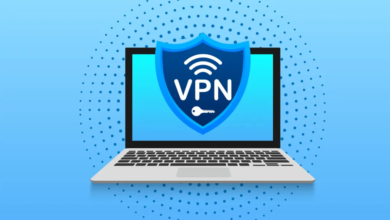
Emerging Threats in Cybersecurity for 2024
As we navigate through 2024, the cybersecurity landscape continues to evolve rapidly. With advancements in technology and the increasing sophistication of cyber adversaries, understanding emerging threats is crucial for organizations and individuals alike. This blog delves into some of the most pressing cybersecurity threats we face this year and offers insights into how to mitigate these risks.
1. Ransomware as a Service (RaaS) Expansion
Ransomware attacks have been a persistent threat for years, but in 2024, the proliferation of Ransomware as a Service (RaaS) has made it easier than ever for cybercriminals to launch sophisticated attacks. RaaS platforms allow attackers with minimal technical expertise to execute ransomware attacks by purchasing ready-made malware and support services from experienced cybercriminals.
Key Points:
- Increased Accessibility: RaaS lowers the entry barrier, enabling more attackers to engage in ransomware activities.
- Advanced Evasion Techniques: Modern ransomware often includes features to evade detection, such as encryption of communications and the use of legitimate system tools.
- Target Diversification: Attackers are increasingly targeting critical infrastructure, healthcare, and small to medium-sized enterprises (SMEs), knowing these sectors are often less prepared.
Mitigation Strategies:
- Regular Backups: Maintain regular, offline backups of critical data.
- Employee Training: Conduct phishing simulations and training to increase awareness of social engineering tactics.
- Endpoint Protection: Implement advanced endpoint protection solutions with behavior-based detection capabilities.
2. Supply Chain Attacks
Supply chain attacks involve compromising a third-party service provider or software component to infiltrate the target organization. These attacks have gained notoriety following high-profile incidents like the SolarWinds breach and continue to be a significant threat in 2024.
Key Points:
- Complex Dependencies: Modern IT environments often rely on a multitude of third-party services and software, increasing the attack surface.
- Targeted Infiltration: Attackers exploit trusted relationships between organizations and their suppliers to gain access to sensitive data and systems.
- Long-Term Impact: Supply chain attacks can have prolonged effects due to the difficulty of detecting compromised components and the wide-reaching implications of such breaches.
Mitigation Strategies:
- Vendor Risk Management: Perform thorough due diligence and regular security assessments of third-party vendors.
- Zero Trust Architecture: Adopt a zero-trust approach, ensuring that all users, devices, and applications are continuously verified.
- Software Bill of Materials (SBOM): Maintain an SBOM to track and manage software dependencies and vulnerabilities.
Also Check
3. Artificial Intelligence and Machine Learning Attacks
While artificial intelligence (AI) and machine learning (ML) offer significant benefits for cybersecurity defenses, they also introduce new attack vectors. Adversarial attacks against AI and ML models can manipulate systems in ways that are difficult to detect and counteract.
Key Points:
- Adversarial Examples: Attackers can create inputs that cause AI systems to malfunction, such as misclassifying images or bypassing anomaly detection algorithms.
- Model Poisoning: During the training phase, attackers can inject malicious data to corrupt the AI model, leading to inaccurate predictions or classifications.
- Privacy Invasion: AI models can inadvertently expose sensitive information, making them a target for data extraction attacks.
Mitigation Strategies:
- Robust Model Training: Use diverse and representative datasets, and apply techniques to detect and mitigate adversarial examples.
- Continuous Monitoring: Implement monitoring to detect anomalies in AI system behavior that may indicate an attack.
- Privacy-Preserving Techniques: Employ methods like differential privacy to protect sensitive data used in AI models.
4. IoT Vulnerabilities
The Internet of Things (IoT) ecosystem continues to expand, with billions of connected devices deployed across various industries. However, many IoT devices lack robust security features, making them attractive targets for cybercriminals.
Key Points:
- Weak Authentication: Many IoT devices use default or weak credentials, making them easy to compromise.
- Insecure Communication: Lack of encryption in data transmission can expose sensitive information to interception.
- Device Management: Limited ability to update and patch IoT devices leaves them vulnerable to known exploits.
Mitigation Strategies:
- Strong Authentication: Enforce strong, unique passwords and consider multi-factor authentication for IoT devices.
- Encryption: Ensure data transmitted between IoT devices and servers is encrypted.
- Regular Updates: Implement mechanisms for remote patching and updating of IoT devices to address security vulnerabilities.
5. Insider Threats
Insider threats remain a significant concern in 2024, as employees, contractors, or business partners with legitimate access to systems can intentionally or unintentionally cause harm.
Key Points:
- Motivation Diversity: Insider threats can stem from various motivations, including financial gain, revenge, or unintentional errors.
- Access Abuse: Insiders often have legitimate access to sensitive data, making it difficult to distinguish malicious actions from regular activities.
- Detection Challenges: Detecting insider threats requires monitoring and analyzing user behavior for signs of anomalous activity.
Mitigation Strategies:
- Behavioral Analytics: Use user and entity behavior analytics (UEBA) to detect unusual activities that may indicate an insider threat.
- Least Privilege: Implement the principle of least privilege, ensuring users have only the access necessary for their roles.
- Employee Training: Regularly train employees on security policies and the importance of protecting sensitive information.
6. Cryptojacking
Cryptojacking involves the unauthorized use of someone else’s computing resources to mine cryptocurrency. This threat has seen a resurgence as cryptocurrency prices rise, making it a lucrative target for cybercriminals.
Key Points:
- Stealthy Operations: Cryptojacking scripts often run in the background, going unnoticed by users while consuming significant computational resources.
- Widespread Impact: Both individual users and large organizations can be affected, leading to reduced system performance and increased electricity costs.
- Diverse Infection Vectors: Cryptojacking can occur through malicious websites, compromised software, or phishing attacks.
Mitigation Strategies:
- Anti-Malware Solutions: Use up-to-date anti-malware software that can detect and block cryptojacking scripts.
- Browser Security: Implement browser extensions that block cryptojacking scripts and ensure browsers are kept up-to-date.
- Network Monitoring: Monitor network traffic for unusual activity that may indicate cryptojacking.
7. Deepfake Technology
Deepfake technology uses AI to create highly realistic but fake videos and audio recordings. While this technology can be used for entertainment and creative purposes, it also poses significant cybersecurity threats.
Key Points:
- Social Engineering: Deepfakes can be used to create convincing social engineering attacks, such as impersonating executives to authorize fraudulent transactions.
- Disinformation: The spread of deepfake videos can be used to manipulate public opinion, causing social and political unrest.
- Reputation Damage: Individuals and organizations can suffer significant reputational harm from malicious deepfakes.
Mitigation Strategies:
- Verification Processes: Implement strict verification processes for communications, especially for sensitive transactions or information.
- Deepfake Detection: Use AI-based tools that can detect and flag deepfake content.
- Public Awareness: Raise awareness about the existence and dangers of deepfakes among employees and the public.
8. 5G Network Vulnerabilities
The rollout of 5G networks promises faster and more reliable connectivity, but it also introduces new security challenges. The increased complexity and the massive number of connected devices create a larger attack surface.
Key Points:
- Increased Attack Surface: The proliferation of 5G-connected devices means more potential entry points for attackers.
- Network Slicing Risks: 5G networks use network slicing to allocate resources, but if not properly secured, these slices can become vulnerable to attacks.
- Data Privacy: The vast amount of data transmitted over 5G networks raises concerns about data interception and privacy.
Mitigation Strategies:
- Comprehensive Security: Implement end-to-end security measures for 5G networks, including encryption and authentication.
- Regular Audits: Conduct regular security audits of 5G infrastructure to identify and mitigate vulnerabilities.
- Collaboration: Work with 5G service providers to ensure robust security measures are in place.
9. Social Media Exploits
Social media platforms are increasingly being exploited for cyberattacks, from phishing schemes to spreading malware and disinformation campaigns.
Key Points:
- Phishing and Scams: Cybercriminals use social media to launch phishing attacks and scams, leveraging the trust users place in their social networks.
- Malware Distribution: Malicious links and downloads can be spread through social media posts and messages.
- Disinformation: Social media is a powerful tool for spreading false information, which can have wide-reaching impacts on public opinion and behavior.
Mitigation Strategies:
- User Education: Educate users about the risks of social media and how to recognize and avoid phishing and scams.
- Account Security: Encourage the use of strong, unique passwords and two-factor authentication for social media accounts.
- Monitoring and Response: Use tools to monitor social media for malicious activity and respond quickly to remove harmful content.
10. Quantum Computing Threats
Quantum computing holds the potential to revolutionize various fields, including cybersecurity. However, it also poses significant threats to current cryptographic standards.
Key Points:
- Breaking Encryption: Quantum computers could potentially break widely used encryption methods, such as RSA and ECC, threatening data security.
- Post-Quantum Cryptography: The development of quantum-resistant algorithms is crucial to ensure the future security of encrypted communications.
- Research and Development: Both governments and private sectors are investing in quantum computing, accelerating the need to foster faster computations.
Conclusion
The cybersecurity landscape in 2024 is marked by increasingly sophisticated threats that require proactive and multifaceted defense strategies. By understanding and addressing these emerging threats—such as RaaS, supply chain attacks, AI/ML vulnerabilities, IoT weaknesses, and insider threats—organizations can better protect themselves against the evolving tactics of cyber adversaries. Staying informed and vigilant is essential to safeguarding critical data and systems in an ever-changing digital world.









